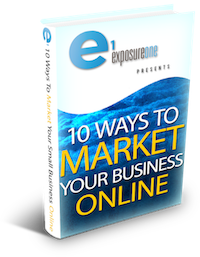 There are plenty of articles out there that will tell you how to write a sales page or letter.
There are plenty of articles out there that will tell you how to write a sales page or letter.
Many of them have some great point while others…well…let’s just say they are not very effective in today’s market – missing the mark on some critical points.
Although sales pages have morphed over the years, the basic principals remain intact: similar to when Direct Mail was filling millions of mailboxes around the world.
I believe there are nine key ingredients to an effective marketing sales page or sales letter. Sure, there are times you will deviate from the core list, but for the most part, I like to see these…
Keys To Writing Sales Pages and Letters
1. Person-To-Person
You are writing first person. That means you are using “I” and “you.”
As opposed to a billboard, the sales page or letter IS personal and should be written as such.
You are reaching out to someone – there is no better way to do that than one-on-one.
Even when you write to several family members simultaneously, you don’t write third person – you make it personal. Your sales pieces should be the same.
If you are struggling with writing first person, try just telling a story. What made you create XX? How did it change your life? What made you want to offer it to others?
People always love a good story.
2. Lead With The Good Stuff
Tell me up front…like the very first paragraph, what my problem is and how you are going to solve it.
What challenges am I going through? What burning need do I have that you are going to fix. Don’t make me go through 3-4 paragraphs of warm fuzzy crud to finally understand what the heck you are selling.
I think some people think they need to ‘bond’ with the person before they present the sale.
I think that is true…but before you can tell me that you came from a one-bedroom home built in the side of mountain, you better have already told me why I am here listening to you in the first place.
3. Make A Compelling Offer
I remember reading that 40% of the buying decision comes down to the value of the offer.
I suspect once you subtract putting the offer in front of the right people to begin with and the overall design/writing of the sales page that sounds about right.
That means, no matter how great you write and format your sales page, if the offer is not good…you won’t sell.
I am sure you have seen those pages.
Beautifully designed. Elegantly written. And then you get to the “offer” and you are thinking, “What the [expletive]?”
That is because despite the great design and writing, the offer was not compelling.
The offer should be a no brainer. It should look like I am getting way more than my money’s worth.
You can also help this area by adding on some ‘bonus’ items I will also receive for taking action now.
4. Vary The Type Style
Please don’t create a sales page or sales letter that looks like the IRS sent it to me.
You know what I mean…
Using boring fonts. Paragraph after paragraph (right and left justified of course).
When writing a sales page, font outside the box!
Use BOLD TYPE.
And subheads are a must.
You can even use…
- Bullets or
- Numbered lists
I am not saying to go crazy to the point of distraction…you need to stay consistent in your font choices but the variety in font and style will keep the reader engaged.
5. Keep The Sales Page Short…Or Long
Ah, the never-ending question on whether a long or short sales letter is better.
Not going to lie, this is a constant debate among copy writing gurus at every geeky copy guru cocktail party (lol).
If I was paid by they word, I would say long copy is better.
If I had A.D.D., then I would say short copy is better.
So, who is right?
Well, I am afraid the cop out answer is both…but…
They both have one thing in common…they tell the story they need to.
Even a long form sales piece does not go down unnecessary tangents – it is just a longer pitch.
I think some people think a long sales piece gives the reader more time to be convinced.
I wouldn’t disagree with that, but if the sales piece is long – just for the sake of being long – the opposite affect will occur.
You know when someone tells you a story there is a ‘short version’ and a ‘long version?’ – Both can be equally entertaining. When writing, it is deciding which style makes your case (sale) better.
6. Guarantee Your Products
A strong guarantee can make all the difference in selling.
If you are dealing with information products there is no reason not to offer some sort of guarantee (if not, see #7).
Offer a 100% satisfaction guarantee if they don’t like your product. No hassle refund within 30 or 60 days.
If you have a significant number of refunds, it is due to one of two issues.
- Your product sucks.
- You sales message is misaligned from what your product delivers.
Either one of those can be easily fixed.
Just by saying you stand behind your product makes you more credible.*
*I am not saying, “just say” you guarantee your product…actually do it…no questions asked. The wrong unhappy person can destroy countless sales going forward by commenting online, telling friends, etc, etc. It is not worth it. Refund and move on. You might actually be surprised that some of these people even eventually come back!
7. Proof and Testimonials
Even if you can guarantee your products, it will always help if you have proof in one form or another.
The best way to show proof is short testimonials.
These ‘third party’ endorsements of your product cannot only put people at ease; they can also be great mini ‘case studies’ that other people self identify with.
Testimonials are key if you cannot offer a 100% guarantee on your product. If you install in-ground pools, you can’t take the pool back out of the ground…so you need someone “helping” you sell.
You only need 3-4 short testimonials…but they can go a long way!
8. Don’t ignore Subject lines, Headlines and the P.S.
These seemingly small details are where the money is.
What about headlines and subject lines?
If no one is interested in the headline or subject line, they will never even read the words you spun into gold below.
There is some great stuff online about headline writing. Check out Copyblogger.com article here for starters.
Also, take a trip to the bookstore and check out all the magazines. They do a great job of wanting you to pick up the magazine and read a specific article.
Think that “P.S.” is a little cliché?
If you are truly writing a sales ‘letter’ than there better be a P.S. at the bottom.
Why? Because they work.
9. Call to Action
I am amazed at the number of sales pieces that don’t have a call to action.
What do you want me to do?
I have seen great sales copy only to have the writer not tell me what I am supposed to do.
Sure, there is a “Buy” button at the bottom of the page, but people need to be told what to do!
Reiterate your program. Tell me why I need to buy it. Tell me what urgent need it is going to solve. Then tell me exactly what to do… “Click the buy now button, fill out the short form, and start XYZ now!”
10. Hey, you said nine things!
Didn’t I say at the beginning of this list there would only be nine things?
Why, “Yes, yes I did.”
The fact of the matter is that “nine things” doesn’t make a very compelling list. Seems to come up short doesn’t it?
When writing authoritative copy that has a “list,” it is always helpful to create an outline from the very start; the reader knows what they are going to walk away with.
5, 7, 10, 21 are all great numbers for lists.
That is not to say you can’t ‘break the rules’ when it suites you
Did we miss anything that you think is key in creating a sales page?
Adding images?
Anticipating objections?
A/B testing?
Feel free to comment below…

